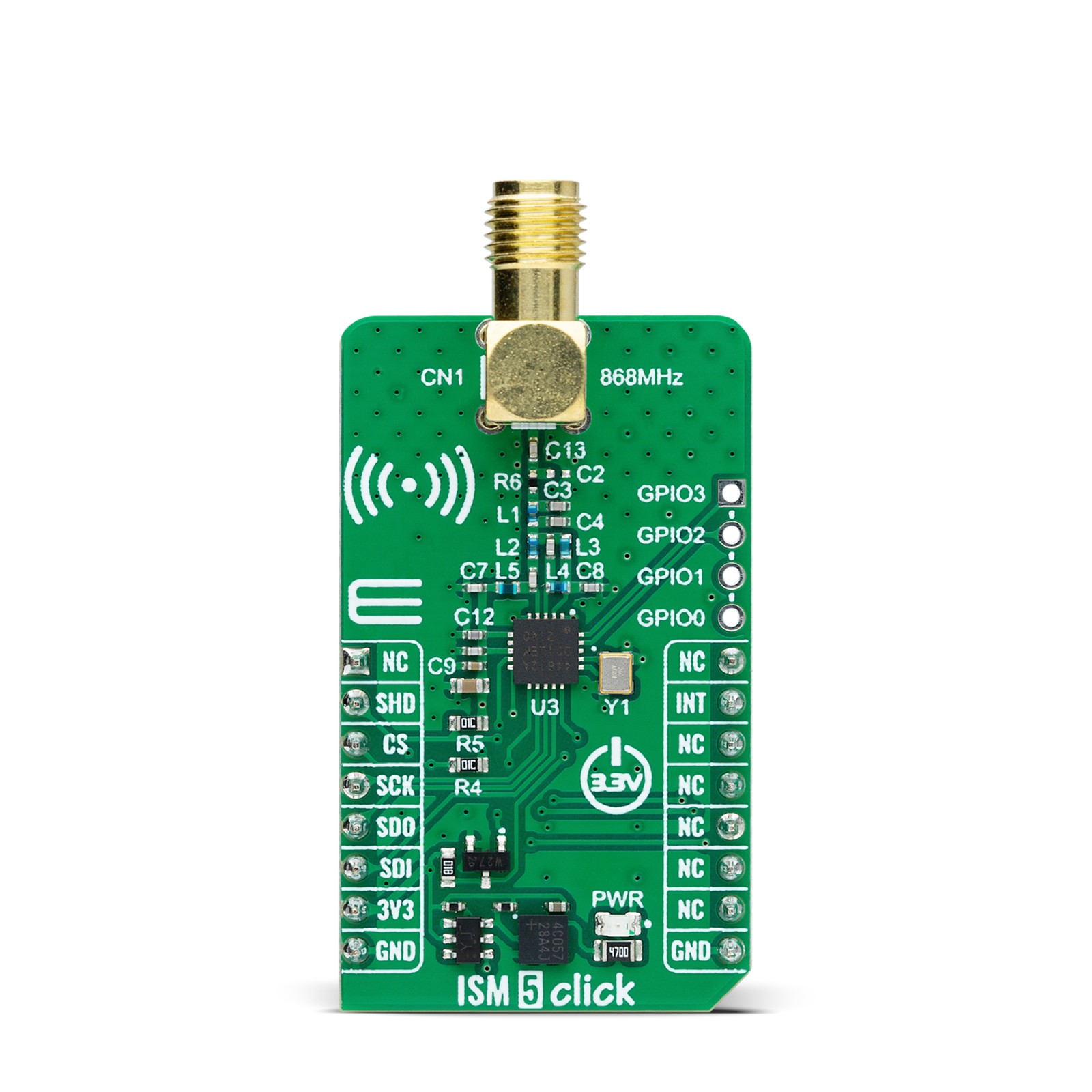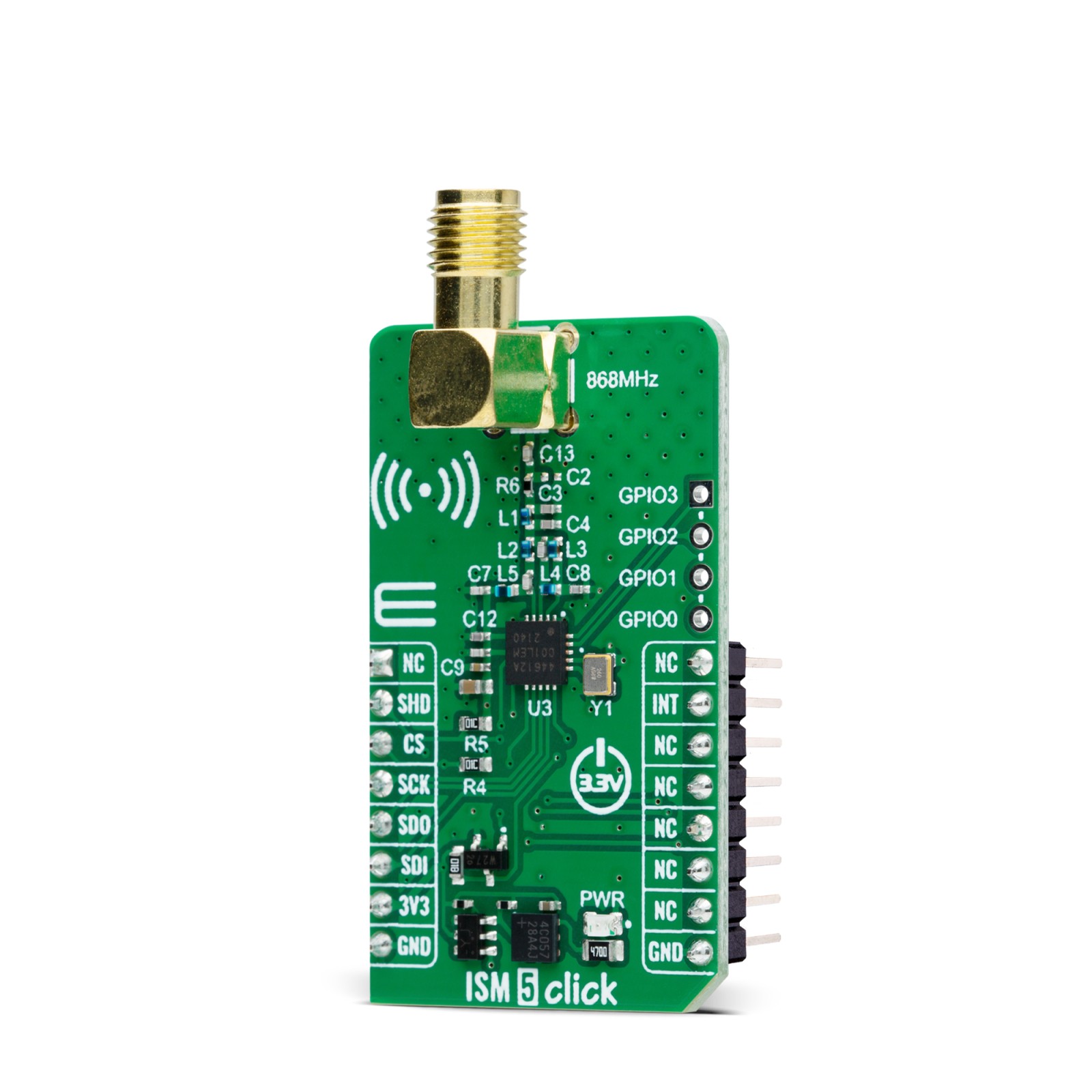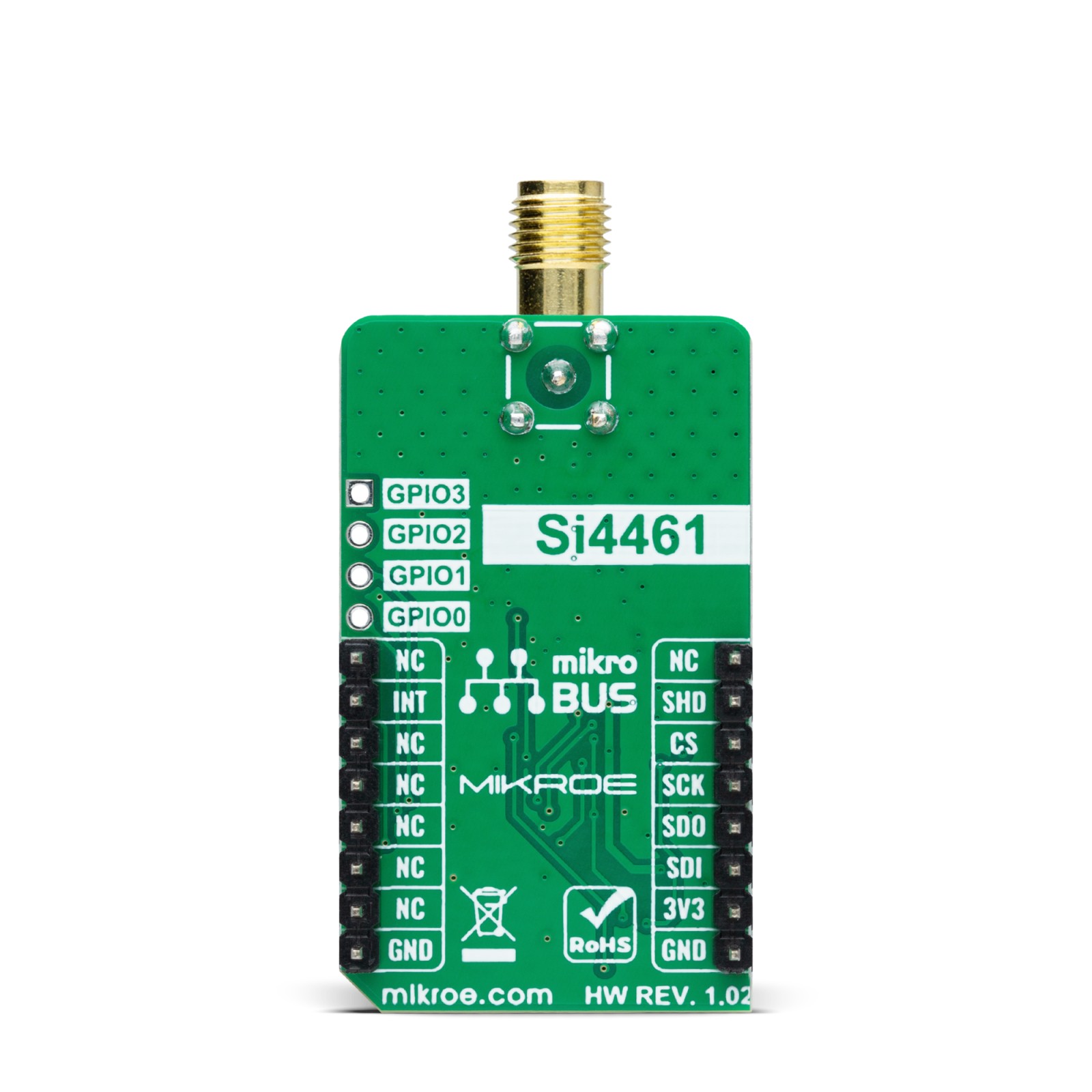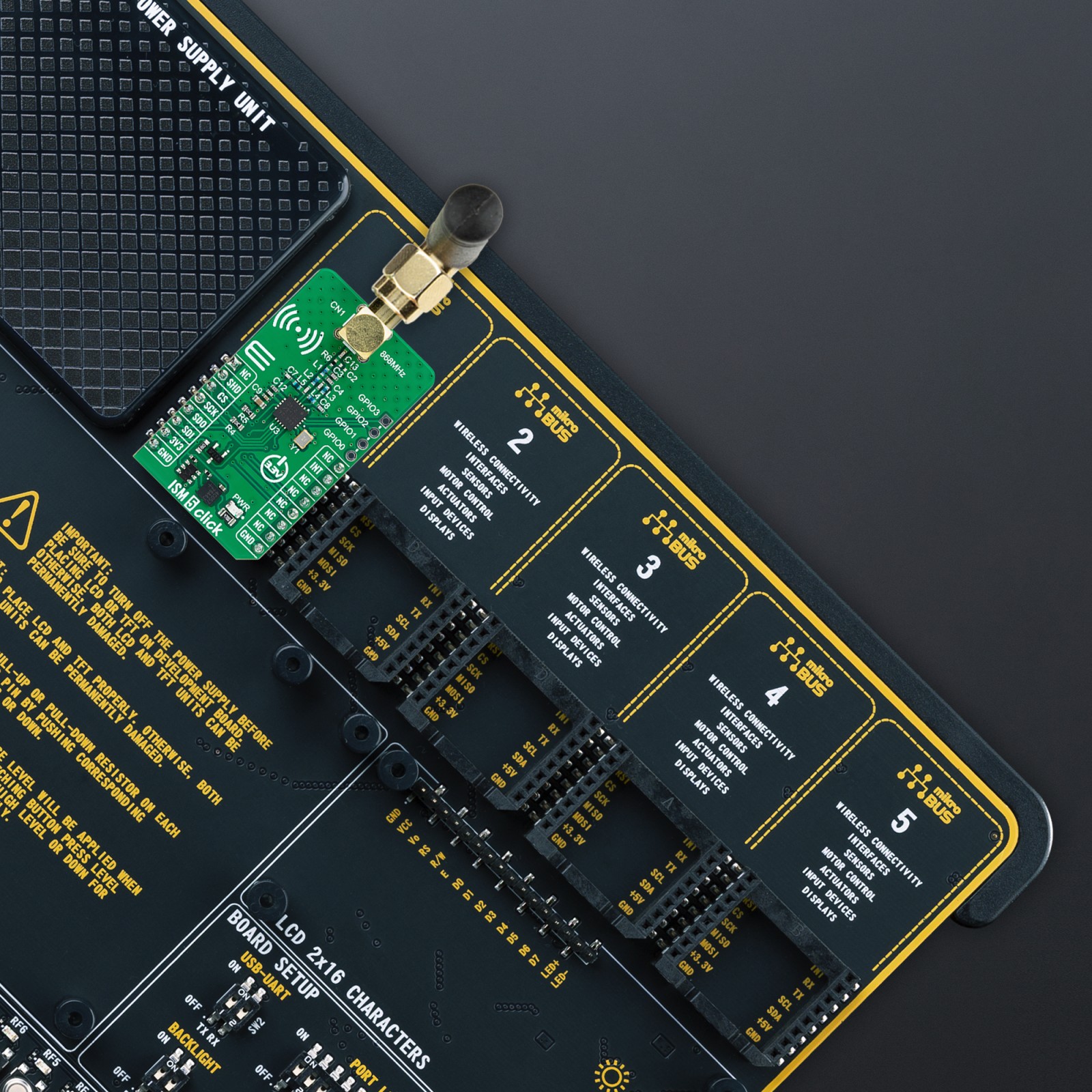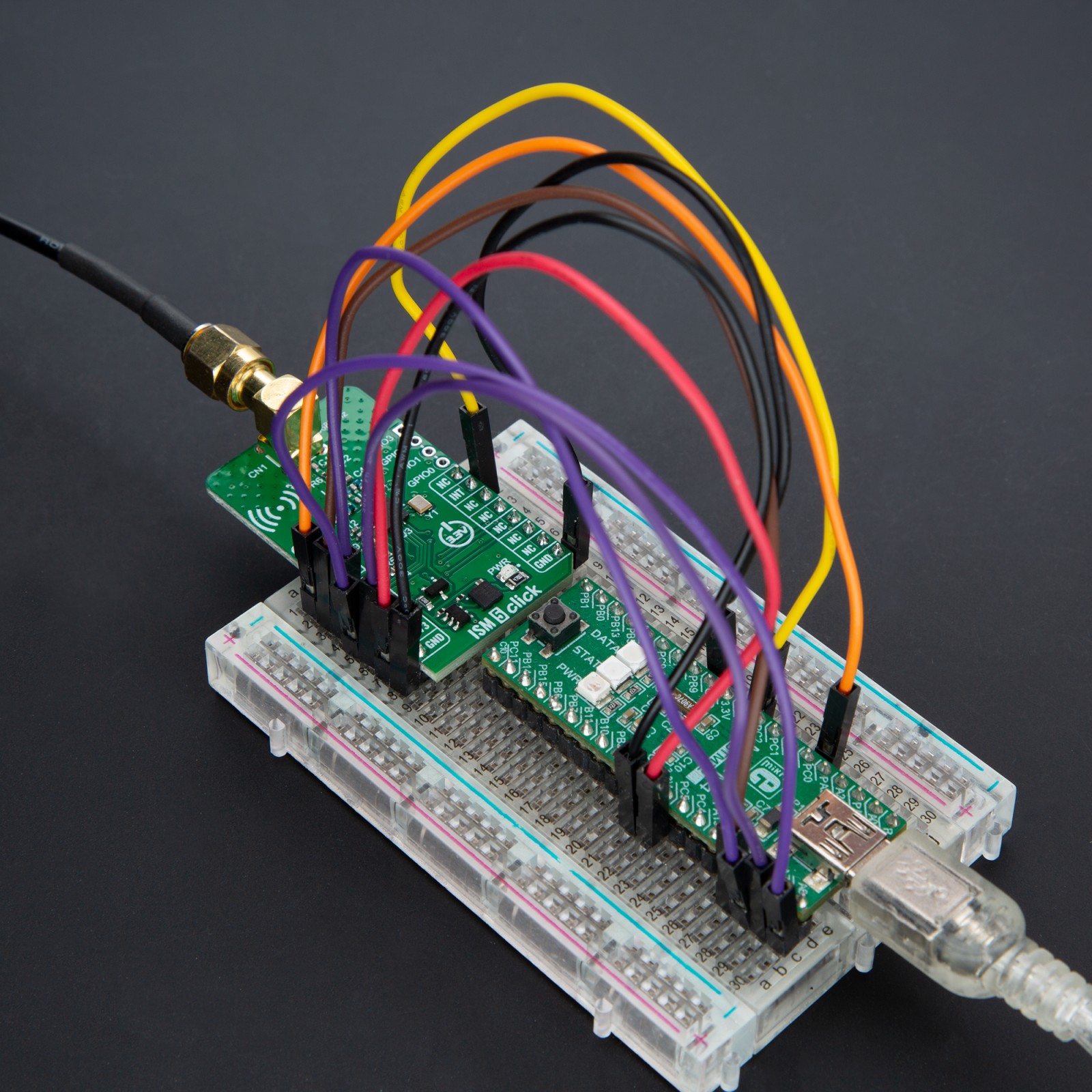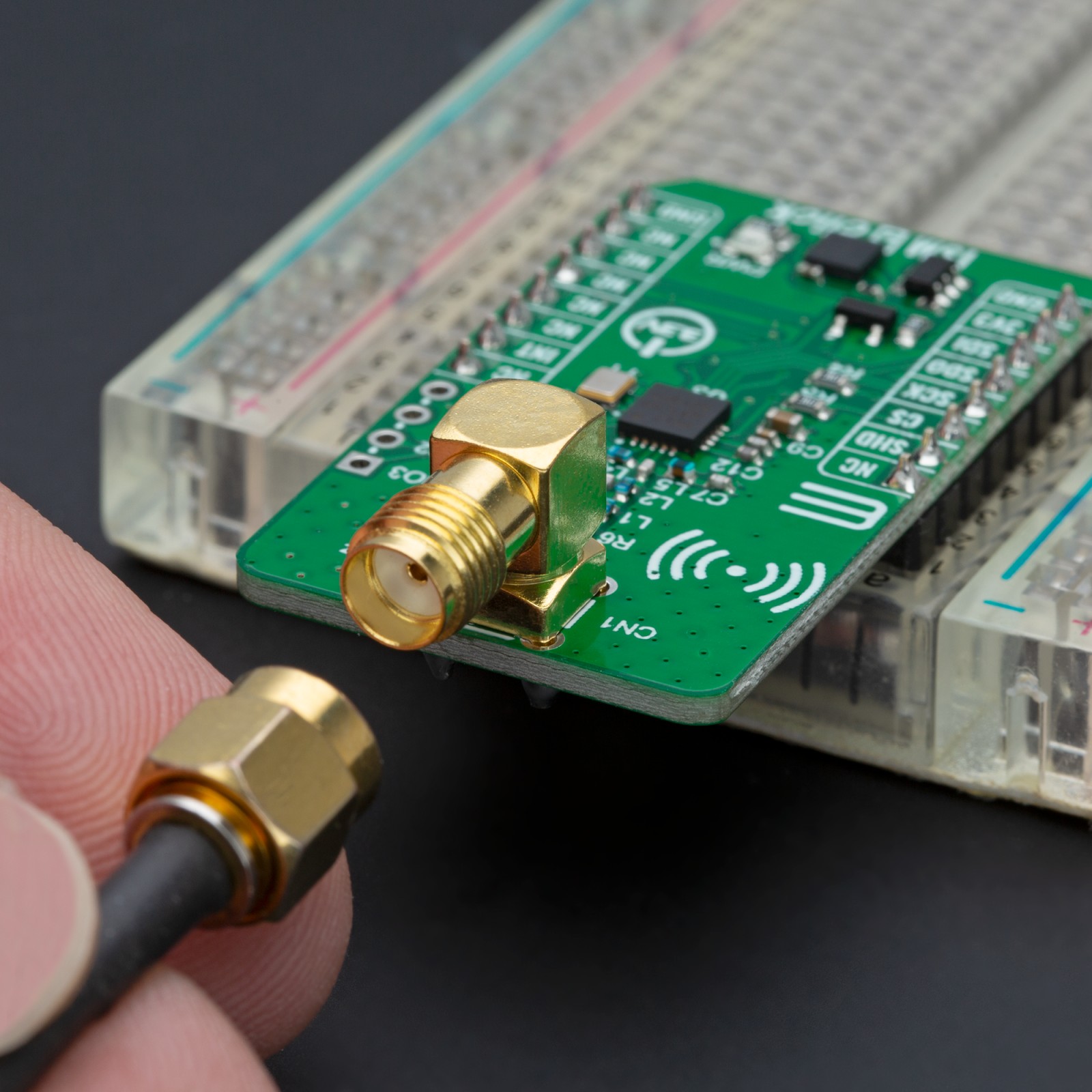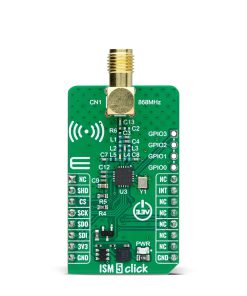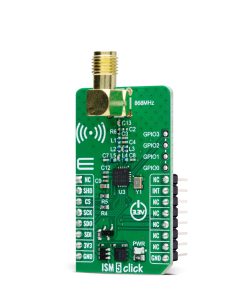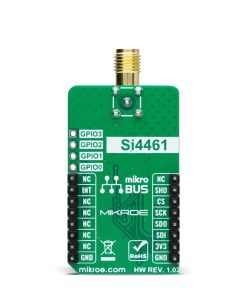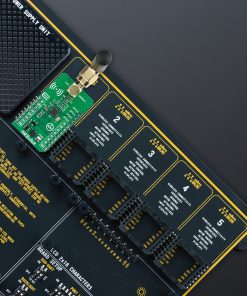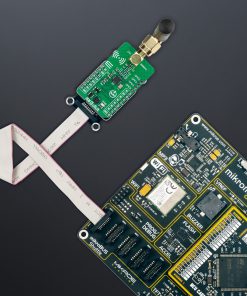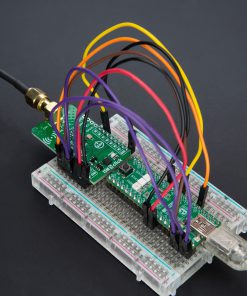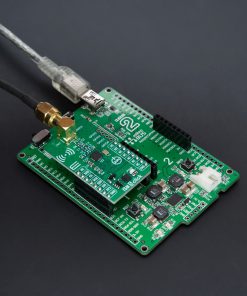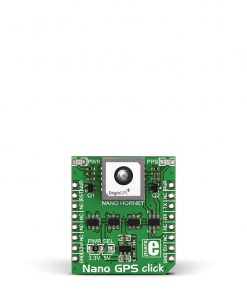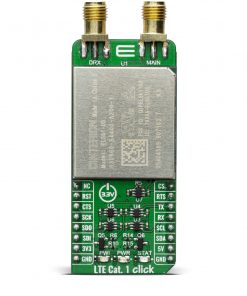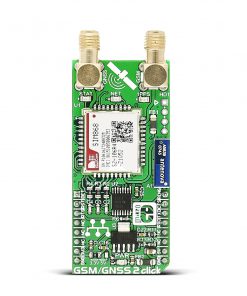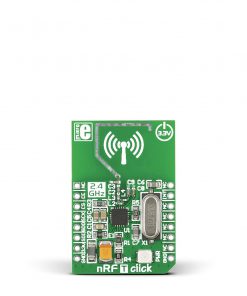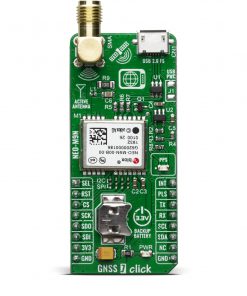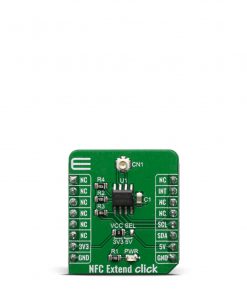ISM 5 Click
R565.00 ex. VAT
ISM 5 Click is a compact add-on board designed for seamless integration into a wide range of applications requiring efficient communication in the Sub-GHz 868MHz frequency band. This board features the Si4461, a high-performance, low-current transceiver from Silicon Labs known for its robust operation in time division duplexing (TDD) mode, enabling alternating transmission and reception of data packets. This board excels in processing signals with its support for multiple modulations, such as (G)FSK, 4(G)FSK, (G)MSK, and OOK, used by a DSP for enhanced filtering, demodulation and packet handling. Key features include exceptional receive sensitivity of -129dBm, low active and standby power consumption, and configurable data rates up to 1Mbps. This Click board™ is ideally suited for smart metering, home security, remote control, telemetry, and industrial control, offering developers a powerful tool for building advanced, energy-efficient wireless solutions.
ISM 5 Click is fully compatible with the mikroBUS™ socket and can be used on any host system supporting the mikroBUS™ standard. It comes with the mikroSDK open-source libraries, offering unparalleled flexibility for evaluation and customization. What sets this Click board™ apart is the groundbreaking ClickID feature, enabling your host system to seamlessly and automatically detect and identify this add-on board.
Stock: Lead-time applicable.
| 5+ | R536.75 |
| 10+ | R508.50 |
| 15+ | R480.25 |
| 20+ | R462.17 |

